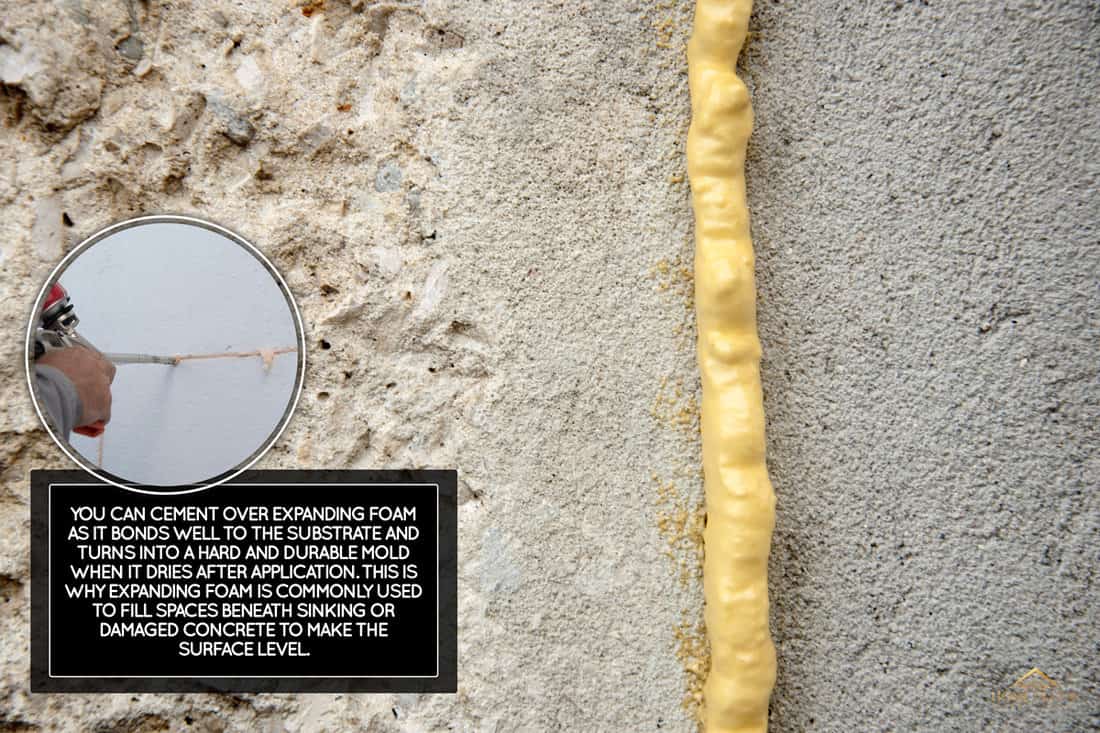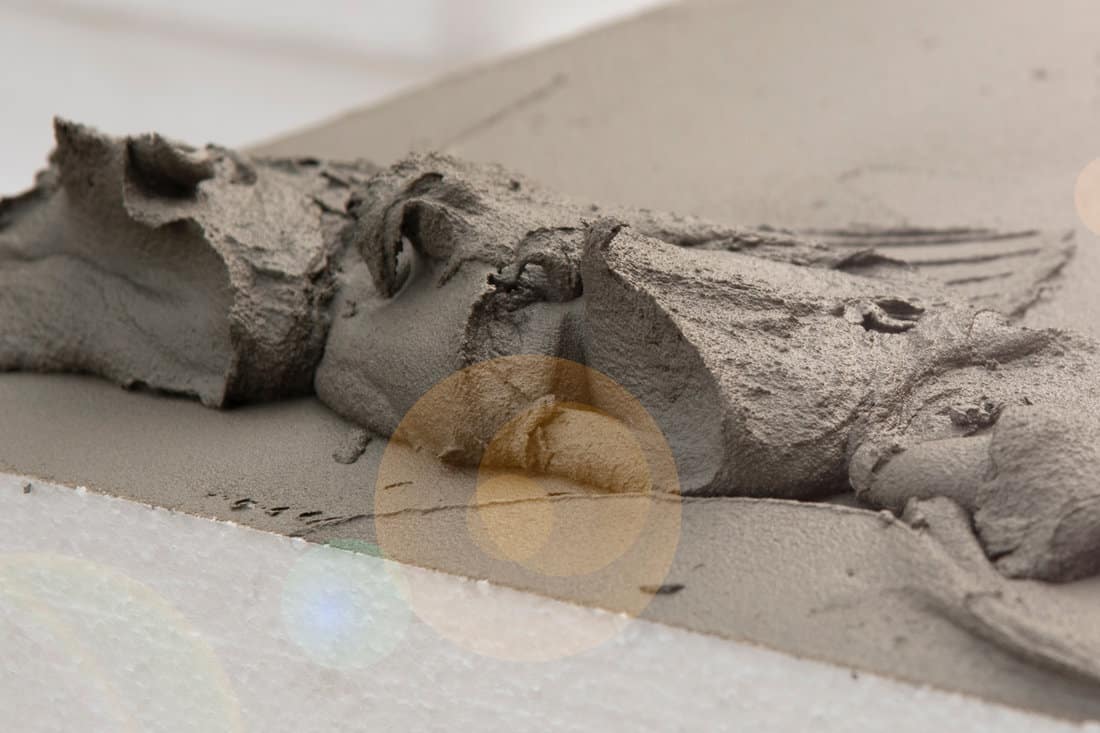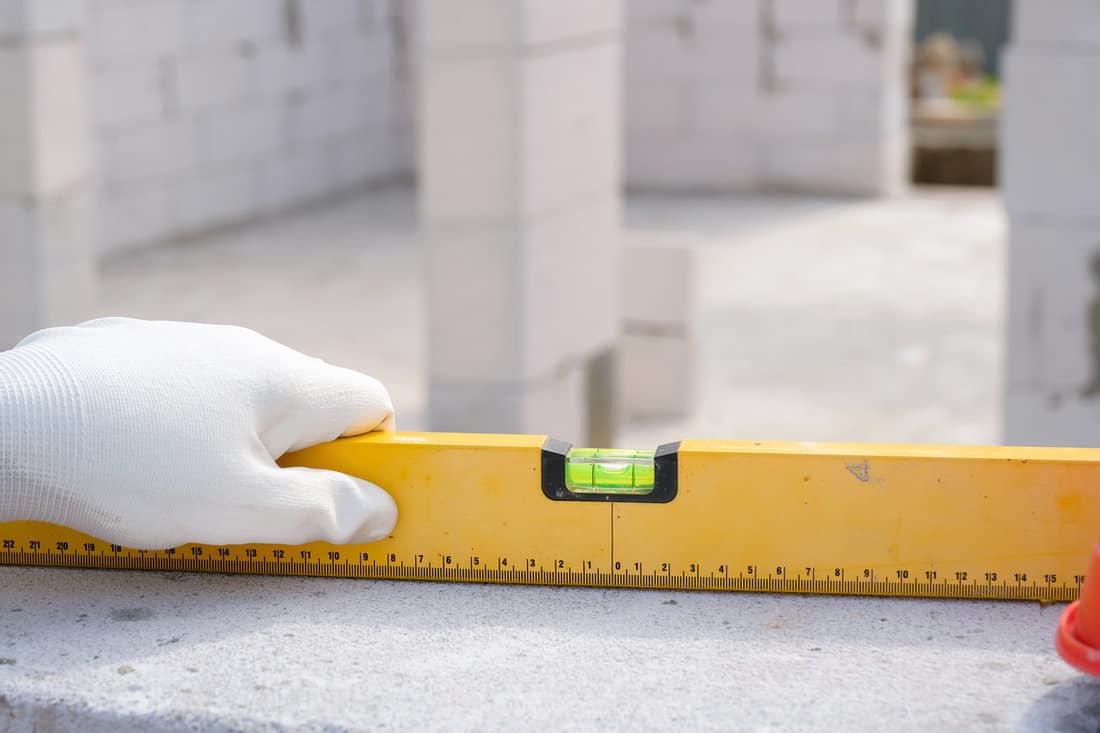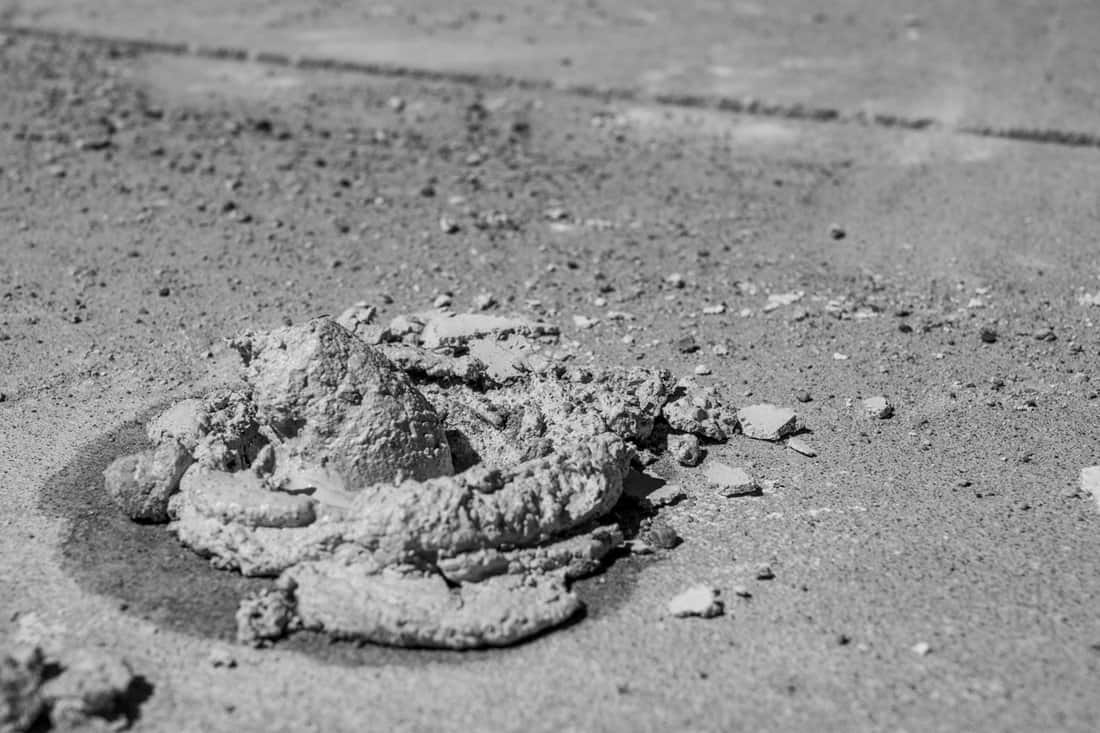Have you ever wondered if expanding foam can be used to fill spaces under concrete? We're curious about this too, so we did our research, and here's what we found out.
Yes, you can cement over expanding foam as it bonds well to the substrate and turns into a hard and durable mold when it dries after application. This is why expanding foam is commonly used to fill spaces beneath sinking or damaged concrete to make the surface level.
Continue reading so we can explain further why expanding foam is a good material to use to fix your concrete problems. This article also answers what causes voids under concrete and which one between expansion foam and mudjacking is better for repairing sinking concrete. Let's get down to business!

Will concrete stick to expanding foam?

We may include affiliate links and curated AI content to highlight top design styles.
Expanding foam or expansion foam is a versatile product. You may know it from its many uses in the house when it comes to filling gaps and insulating different nooks and crannies. It helps seal your house from dirt, moisture, pests, and other unwanted particles. At the same time, it makes it more energy efficient by preventing air from entering or going out of your house.
Expanding foam is usually made by combining polyol resin with isocyanate. When these come into contact with air, a chemical reaction occurs. The previously liquid substance then expands in size and solidifies, turning into a hard mold. It is this property that makes it very useful in and out of the house.
Once the expanding foam hardens, it'll attach permanently to the substrate. It is very durable, so you can put cement over it, and it can bear the added weight. Expanding foam cures at a fast rate. You can put cement 15 minutes after the application. This is why this product is commonly used for concrete repair.
Using Expanding Foam for Concrete Leveling

Since expanding foam bonds well to cement and soil, it is used for leveling uneven concrete hardscapes and foundations.
When there are portions of your concrete driveway or patio that have shrunk, you need to fix them so that your concrete surface is level again. Aside from being nicer to look at, it is also safer for you and your family. It will reduce the risk of trips and injuries. You can also avoid pooling water in shrunken spaces and prevent further harm to their surfaces due to water damage.
Contractors use expanding foam to fill the voids underneath the concrete slabs so that they will be lifted and be level with the ground again.
Here's how they do it.
- Drill small holes into the concrete slab. The holes are about the size of a dime.
- Inject expanding foam into the holes.
- Allow expanding foam to fill all the voids, including the newly drilled holes.
- Wait for expanding foam to harden or cure. This will take about 15 minutes.
- Remove excess foam.
That's it! In just a short time, the concrete damage is fixed. When the expanding foam has dried and hardened, the concrete slab in your patio or driveway is ready for use already. This means you can walk on it or drive over it, and it'll be good as new.
If the shrunken portion in your hardscape is accessible through the sidewalk, there's no need to drill holes in the concrete. The contractor will use a jack to be able to lift the concrete slab and do the expanding foam injection from the side.
For those with foundation issues, it's best to consult with an expert first if the problem can be remedied with the use of expansion foam. There are other causes of foundation damage that may require different solutions.
What causes voids under concrete?
There are different reasons why the concrete slab separates from its underlying layer. Here are some of them.
Water Damage
Leaking pipes can do so much damage, especially when there's improper sloping and poor water drainage underground. The soil is soaked in water and will eventually erode, creating a void between the ground soil and concrete.
Since there's no more soil supporting the heavy concrete, it will shrink or crumble.
Soil Settlement
If the soil isn't properly compacted before the concrete application, it'll absorb water.
The problem happens when there's poor water drainage because the water stays in the soil. Water will freeze or thaw depending on outside temperatures. Consequently, the soil expands when the water freezes and contracts when the water thaws. This will cause the soil to settle and may cause the structure above it to shift or shrink.
Incorrect Soil Type
There are different soil types, and each one has a specific load-bearing capacity. Contractors should know which soil type to use that would suit its particular purpose. In the case of concrete installation, it would require a soil type that can support a heavy load such as concrete.
If the soil type is incorrect, it won't lend adequate support to the concrete above it.
Different soil types also have different textures and structures that you should consider before using. For example, clay soil shrinks and compacts during dry weather. When this happens, there'll be spaces between the ground and the concrete above it. So, it's not advisable to use clay soil for your ground preparation.
These are the possible reasons why your concrete slab is sinking. If it happens to you, it's best to have a foundation repair specialist inspect it to determine the cause and what can be done about it.
Expansion Foam Vs. Mudjacking: Which is Better?
Since concrete can sink over time due to different reasons, experts continue to provide services on how to level concrete surfaces to make them safer to use and make your property look better.
Expansion foam and mudjacking are two of the most popular concrete repair methods. It's important to know their difference so you can choose which one is right for fixing your concrete problem.
Mudjacking

Mudjacking uses a combination of sand, cement, and water to form a semi-liquid mixture called slurry. Like expanding foam, holes have to be drilled into the concrete slab, and the slurry is pumped into the holes to fill the voids. So, the manner of application is almost similar.
However, it isn't guaranteed that all voids would be properly penetrated. As such, this method isn't recommended for concrete that has been severely damaged. The slurry also won't be able to provide adequate support to load-bearing concrete slabs.
At the same time, this material is quite heavy. It packs around 100 lbs per cubic foot. So better make sure that your soil type can sustain this weight. Otherwise, you'll have the same problem in the near future.
Mudjacking also takes time to dry or cure. Depending on the extent of the damage, it might take between one to three days before you can use the concrete slab again.
Take note also that the mudjacking material isn't waterproof. You need to have a good drainage system underground so that it won't be soaked with too much water.
Expansion Foam

The use of expansion foam for leveling concrete is referred to as polyurethane concrete lifting. It uses high-density geo-technical expanding foam. Since we've already discussed how it is applied, we'll dive right into its properties and how they play a crucial role in repairing sunken concrete slabs.
Since expansion foam expands to multiple times its size, it can raise the sunken concrete surface. Thus, you can use it for the treatment of heavy or sensitive concrete slabs.
It also fills all the voids between the substrate and concrete, so you have more solid support underneath. It is also lightweight. It won't add too much load to the soil. It dries quickly, so you can use the concrete surface again in a short time.
Best of all, expansion foam is waterproof and durable. That's why it offers a long-lasting solution to your concrete problem.
The Verdict
Polyurethane concrete lifting is clearly the better choice between the two repair methods. It works on all kinds of concrete surfaces, and it is cost-effective overall since it offers a long-term solution to your problem.
Final Thoughts
You can cement over expanding foam. You can also use expansion foam to fill voids underneath your concrete slabs that have sunk over time so that they'll be back in good condition.
To learn more about the other uses of expanding foam, you may visit the following links:
How To Fill Large Gaps In Your Foundation?
How To Fill Gaps Between Your Pipes And Walls [Step By Step Guide]



